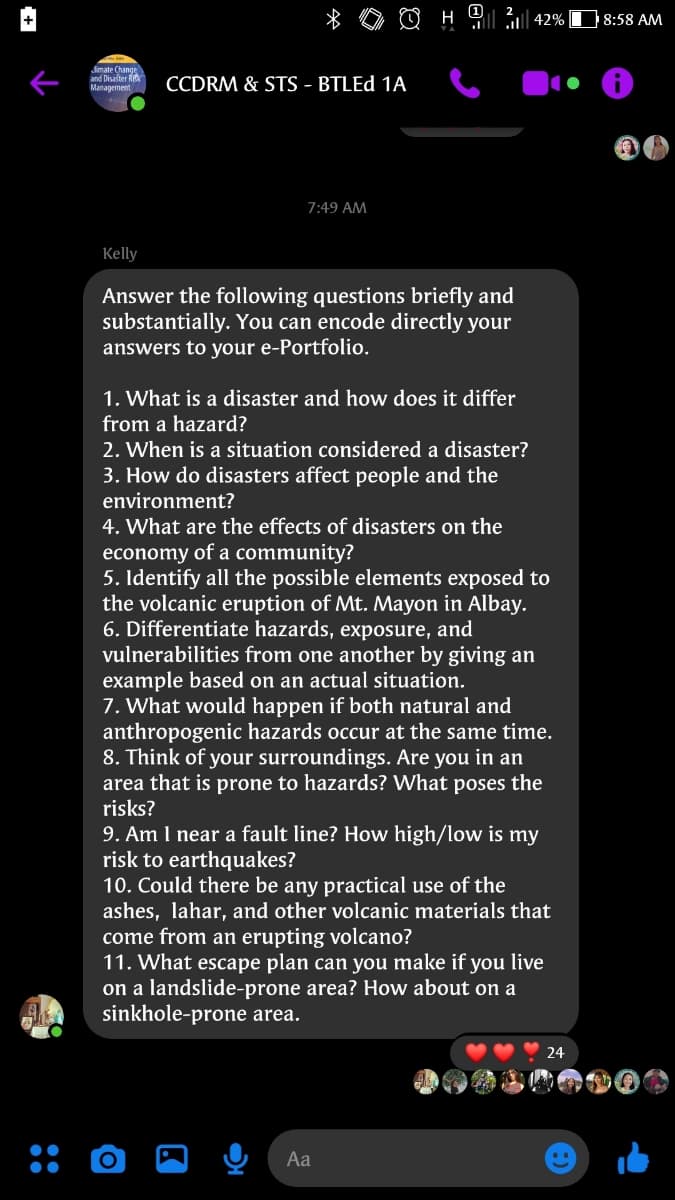1. What is a disaster and how does it differ from a hazard? 2. When is a situation considered a disaster? 3. How do disasters affect people and the environment?
1. What is a disaster and how does it differ from a hazard? 2. When is a situation considered a disaster? 3. How do disasters affect people and the environment?
Related questions
Question

Transcribed Image Text:8:58 AM
lll| 42%
Jimate Change
and Disater Ri
Management
CCDRM & STS - BTLED 1A
7:49 AM
Kelly
Answer the following questions briefly and
substantially. You can encode directly your
answers to your e-Portfolio.
1. What is a disaster and how does it differ
from a hazard?
2. When is a situation considered a disaster?
3. How do disasters affect people and the
environment?
4. What are the effects of disasters on the
economy of a community?
5. Identify all the possible elements exposed to
the volcanic eruption of Mt. Mayon in Albay.
6. Differentiate hazards, exposure, and
vulnerabilities from one another by giving an
example based on an actual situation.
7. What would happen if both natural and
anthropogenic hazards occur at the same time.
8. Think of your surroundings. Are you in an
area that is prone to hazards? What poses the
risks?
9. Am I near a fault line? How high/low is my
risk to earthquakes?
10. Could there be any practical use of the
ashes, lahar, and other volcanic materials that
come from an erupting volcano?
11. What escape plan can you make if you live
on a landslide-prone area? How about on a
sinkhole-prone area.
24
Aa
Expert Solution
This question has been solved!
Explore an expertly crafted, step-by-step solution for a thorough understanding of key concepts.
Step by step
Solved in 2 steps
